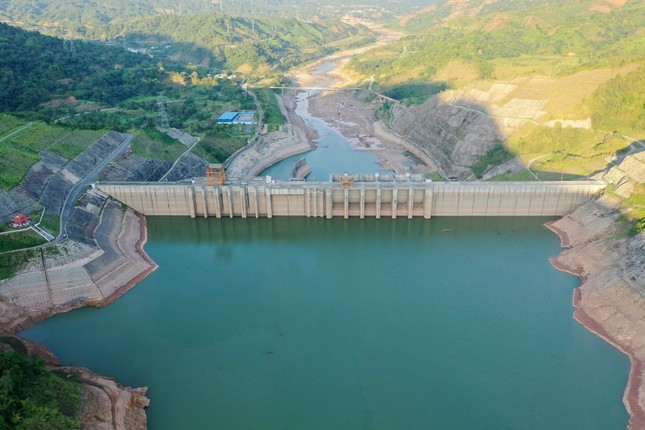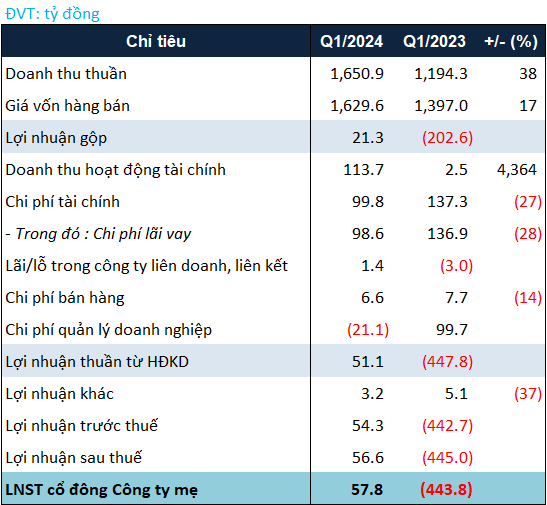The average daily power consumption by the Electricity Regulatory Authority is around 558.7 million kWh, which is lower compared to the week before Tet by about 213 million kWh. From the beginning of 2024 until now, electricity consumption nationwide has increased by about 7.2% compared to the same period in 2023. In particular, the Northern region has increased by 11.4%, the Southern region by 7.7%, and the Central region by 4.5%.
According to the Electricity Regulatory Authority, starting from February 7th (the 28th of Lunar New Year), the National Power System Dispatch Center (A0) has stopped reserving thermal power plants using coal to avoid excess supply during the holiday. On the first day of Lunar New Year, 25 thermal coal power plants in the Northern region and 7 thermal coal power plants in the Central and Southern regions were operational to mitigate the low-load period at noon and ensure minimal configuration and hydroelectricity savings.
From the afternoon of February 10th to 12th (the 1st to 3rd of Lunar New Year), A0 has started up the thermal coal power plants with a total capacity of 4,088 MW to meet the additional load and maintain water levels in hydropower reservoirs. Additionally, to increase system safety during abnormal situations, from 0:00 on February 9th (the 29th of Lunar New Year) to 24:00 on February 12th (the 3rd of Lunar New Year), A0 has adjusted the transmission limits on interlink lines to reduce them to 50% compared to normal working days and increased them to 70% during low-load noon periods to increase the use of renewable energy and high-load periods in the Northern region.

Many hydropower reservoirs in the Northern region have lower water levels compared to the average in previous years, ranging from 48-98%.
The Electricity Regulatory Authority also stated that due to reduced demand and increased renewable energy sources, particularly wind power, the peak generation reached approximately 4,000 MW. During Tet, A0 has put renewable energy power plants into operation and closely monitored the transmission limits of 500kV power lines.
“During the 1st to 3rd of Lunar New Year (February 10th to 12th), due to the effect of excess supply in the national power system, A0 has coordinated with regional dispatch centers and power companies to control the absorbed capacity of hydropower plants based on cost-avoidance mechanism. Overall, the electricity supply during the week and the Lunar New Year holiday was well ensured,” said the Electricity Regulatory Authority.
Regarding the water levels in hydropower reservoirs, according to the Electricity Regulatory Authority, from early February until now, hydropower reservoirs in the Northern region have had lower water levels compared to the multi-year average, ranging from 48-98%. Reservoirs such as Hoa Binh, Thac Ba, and Tuyen Quang have better water levels.

The nationwide power consumption has significantly decreased during the Lunar New Year.
In the Central region, most hydropower reservoirs have good water levels, with levels equal to or higher than the multi-year average. Some reservoirs, such as Binh Dien, Vinh Son A/B, Song Ba Ha, Nam Kong 3, Ialy, DakRTih, Dong Nai 3, and Song Con 2A, have lower water levels, ranging from 11-80% of the multi-year average. In the Southern region, hydropower reservoirs have higher water levels. However, Dai Ninh and Thac Mo reservoirs have water levels of only 55-66% of the multi-year average.
To ensure power supply in the coming months, the Electricity Regulatory Authority has requested hydropower reservoirs in the Northern region to conserve water, especially those with low water levels. Hydropower plants will be operated based on the efficient water intake capabilities of hydraulic works while still preserving water for electricity generation during the dry season in 2024. Hydropower plants in the Central and Southern regions will be maximally utilized to ensure power supply.
“To ensure electricity supply until the end of the dry season in 2024, thermal power plants and gas turbines will be deployed according to system demand. Renewable energy sources will be maximally utilized, and oil-fired sources will be mobilized when necessary,” said the Electricity Regulatory Authority.







































